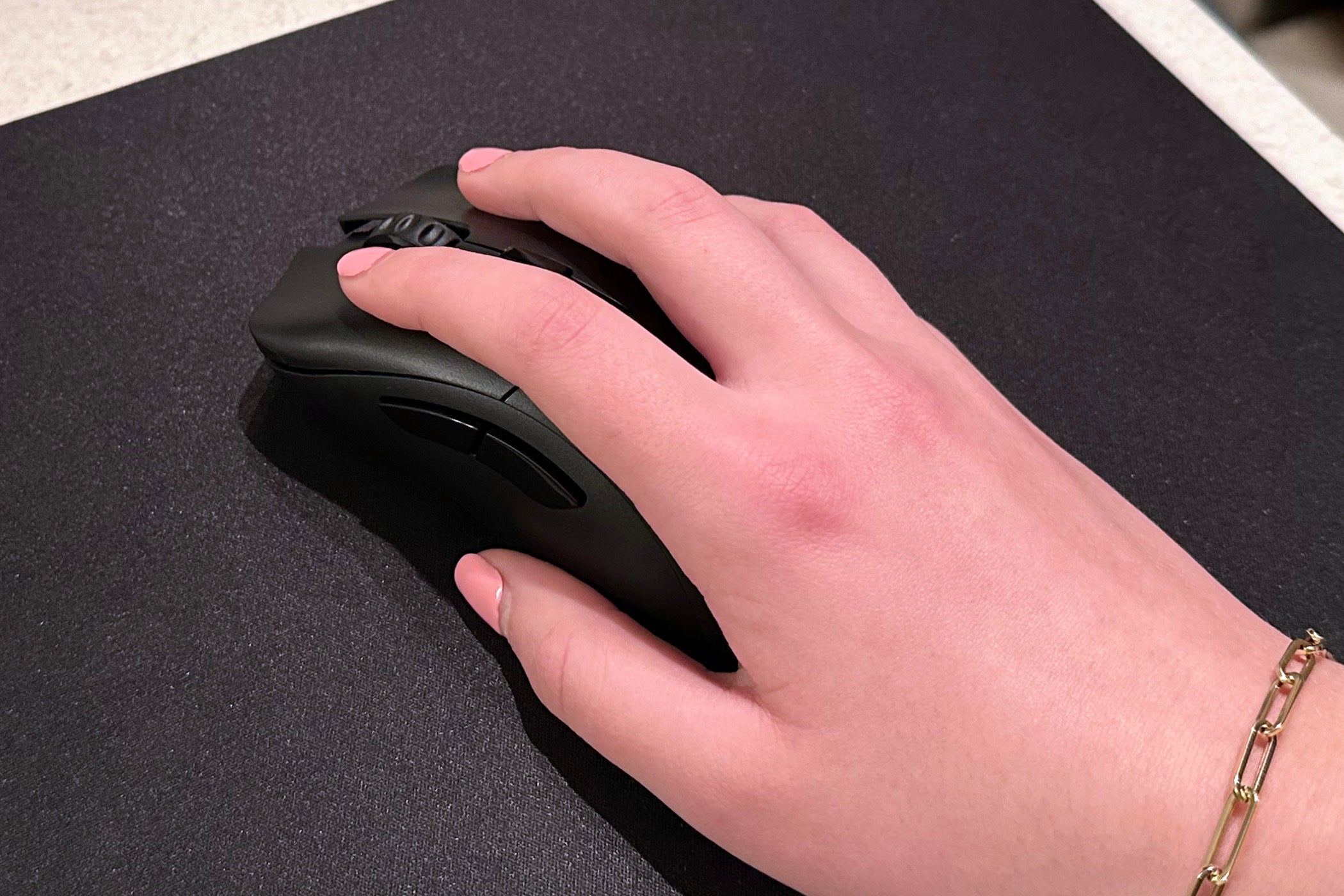Glorious specializes in high-performance computer gaming mice, keyboards, and related accessories. While the company has its fair share of flashy, LED-blinged products, Glorious also has several conservatively designed peripherals that wouldn't look out of place in the average office. The Glorious D 2 Pro and O 2 Pro series mice are devices that do exactly that, providing gaming sizzle without the outward flash.
At first glance, there's not much difference between the Glorious Model D 2 Pro and the Model O 2 Pro, and even less of a difference between the 1K and 4K/8K versions of each model, and that would mostly be true. Look a bit closer, however, and there's a lot to appreciate about Glorious' subtle, but nuanced approach to its Pro Series mice.
Glorious Model D 2 and O 2 Pro - Designs and Aesthetics

Glorious gets surprisingly granular with its individual Pro mouse offerings to the point where it's difficult to tell them apart. For the Pro series, there's the Model D 2 Pro 1K Edition ($99.99), Model D 2 Pro 4K/8K Edition ($129.99), Model O 2 Pro 1K Edition ($99.99), and Model O 2 Pro 4K/8K Edition ($129.99).
The most notable difference between the Model D 2 (aka, Wireless Ultralight Esports Mouse) and Model O 2 (aka, Wireless Ergonomic Esports Mouse) is the shape. Otherwise, functionality and software are nearly identical among the respective 1K and 4K/8K editions.
(insert Figure 03)
The Model D 2 Pro has a shape that is reminiscent of the classic Microsoft IntelliMouse or the more recent Logitech G703 LIGHTSPEED Wireless Gaming Mouse, with a slightly irregularly shaped bottom portion that sweeps to the right. It's what would be considered a right-handed mouse, good for a palm or claw grip.
(insert Figure 04)
The Model O 2 Pro, on the other hand, has a leaner and more symmetrical shape, with a design reminiscent of the Logitech G Pro X Superlight, just with a touch more outward flare at the top and bottom. It's what would be considered an ambidextrous mouse, although the two buttons on the left side are typically meant to be accessed by a right-hander's thumb. This shape is suitable not only for a palm or claw grip like the D 2 Pro, but also a fingertip grip, should that be your preference.
The 1K and 4K/8K designations simply refer to the maximum polling rate. A 1K, or 1000Hz, polling rate means the mouse position updates every 1 millisecond, while 4K is every 1/4th millisecond, and 8K is every 1/8th millisecond. Generally speaking, the higher the polling rate, the better, though not every game is compatible, and it does require more resources from both the PC and mouse, dropping the battery life of the latter to less than half at 4K. In fact, if you want 8K, it doesn't even work with the included 2.4GHz 4K Wireless Receiver, instead requiring wired use of the included Type-A to Type-C Paracord Charging Cable or equivalent.
Glorious Model D 2 and O 2 Pro - Software and Customization
Using any of the mice is as simple as plugging in the included 2.4GHz receiver, or, should you want to use the mouse wired, the included Type-A to Type-C Paracord Charging Cable or equivalent. Of course, the mouse should be fully charged before first use, and you need to remove the protective film on each of the four mouse feet (skates), but otherwise, there's nothing else you have to do for basic operation.
Glorious CORE is the unified software suite for the company's Pro peripherals, including the D 2 and O 2, and allows you to unlock the mouse's full potential, including firmware updates. It requires a computer running the 64-bit version of Windows 7 or higher.
Once installed, an image of the connected mouse is displayed on the app, as well as how the mouse is connected, its battery life, and more. On my Windows 11 Home desktop, a Glorious CORE icon was placed in the Notification area, which lets you open or quit the app.
Three different Key Binding and Performance profiles can be set. By default, the Key Binding is set to Left button, which is the left mouse button, Right Button, which is the right mouse button, Scroll click, which is the scroll wheel, DPI cycle up, which is the small button below the scroll wheel, Forward, which is the first button on the left side, and Back, which is the second button on the left side.

Performance lets you set, among other options, one of four color-coded DPI stages, each of which matches the LED coloring of the DPI indicator light underneath the mouse. By default, yellow is 400 DPI, blue is 800 DPI, red is 1600 DPI, and green is 3200 DPI. You can also configure various other settings, including Lift-off Distance, which is how far the mouse sensor has to be from the mousepad or other surface to stop tracking, Before Press Time, which adds debounce delay at the exact moment you press the mouse button to minimize double presses, and more. There's little about the mouse and its motion that can't be finely tuned with the app.

The 1K versions of the mice can have their polling rate set to 125Hz, 250Hz, 500HZ or 1000HZ. The 4K/8K versions add 2000Hz, 4000Hz, and 8000Hz options, the latter of which is only possible when the mouse is used wired.
Battery life is up to 80 hours, which is a bit low for mice with so few lights, but more understandable given the featherlight weights. Battery life can be checked in wireless mode by pressing and holding the DPI button for three seconds and checking the LED color below it. Red is 0 - 25%, orange is 26 - 60%, yellow is 61 - 90%, and green is 91 - 100% battery life. The mice can be used while charging.
Glorious Model D 2 and O 2 Pro - Performance

On Windows 11 Home, using a 3440 x 1440 main display and a desktop that spans to the right to a 2560 x 1080 secondary display, I found pointer movements smooth and accurate at 1600 DPI. The optical switches offer a quick button response and satisfying click.
As is now standard with high-performance mice, the four 100% Polytetrafluoroethylene (PTFE) mouse skates let the mice glide effortlessly across most surfaces and are ideal for pairing with a good mouse mat. The D 2 series even includes additional mouse skates that can optionally go in-between the top and bottom feet for even more speed. For me, the extra speed was a bit much, but I love that the option is there for D 2 series mouse owners.
In combination with the feather-light weights of each mouse, 57g for the Model O 2 Pro 1K, 59g for the Model O 2 Pro 4K/8K, 60g for the Model D 2 Pro 1K, and 62g for the Model D 2 Pro 4K/48K, being able to respond quickly in-game genuinely comes down to the limits of your own reflexes. In short, all the performance you might need is there for the taking.
Thanks in part to them being around half the weight, each of these mice easily exceed the movement speed of my previous favorite in this area, the Corsair Scimitar Elite Wireless. While none of these mice have anywhere near the same number of programmable buttons as Corsair's top-rated wireless mouse, there's something positive to be said about the Glorious Pro's streamlined bodies in terms of comparative comfort.
For my own PC desktop setup, I have a lot of devices connected, including a ton of wireless devices of every type. As such, I found that I had stutters and freezes with the 1K's 2.4GHz Wireless USB Receiver plugged directly into the front of my PC's USB-A port. Fortunately, Glorious anticipated this issue.

Using the included Wireless Extender Dongle, which has a USB-C port on one end and a USB-A port on the other, I was able to plug in the Type-A to Type-C Paracord Charging Cable on the front of my PC to the USB-C port on the Wireless Extender Dongle. I then plugged the 2.4GHz Wireless USB Receiver into the USB-A port of the Wireless Extender Dongle. With the 6.5ft length of the cable, I had no trouble positioning the receiver in close enough proximity to the mouse to eliminate any further potential for stutters and freezes.
Due to their higher performance requirements, the 4K/8K models do away with the two-part USB Receiver entirely, opting instead for a single 2.4GHz 4K Wireless Receiver that requires the Type-A to Type-C Paracord Charging Cable or equivalent to function. While it would have been nice not to have needed the extension, it's nice that the solution to any potential interference problem is already included in the box.
These four mice are wonderfully designed, but they're not perfect. While the mice work on just about any computing device, only Windows users will benefit from the Glorious CORE configuration software. This can be considered something of a missed opportunity as the down-to-basics nature of the mice can be applicable to many different use cases. The fact remains, however, that Windows is the operating system that the majority of PC gamers use, so it’s not the worst decision in the world to put the focus there.
Another potential downside is with lefties. While the O 2 Pro is shaped for ambidextrous usage, lefties will have to awkwardly utilize their pinkies for the two side buttons rather than the thumb that righties get to use.






